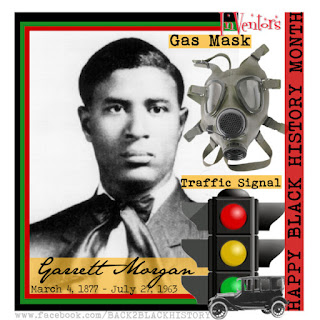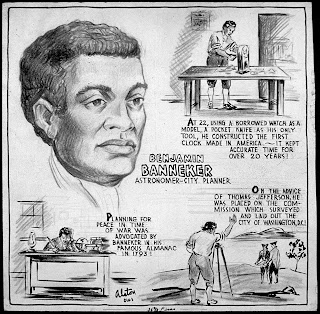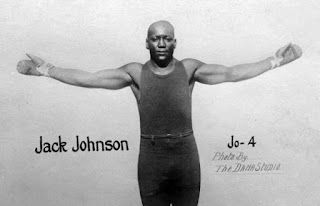We Did It — They Hid It
In order to raise the consciousness of our African brothers and sisters, we must understand and apply the Akan concept of Sankofa, which means that in order to move forward we first have to take a step back. In other words, before we can be prepared for the future, we must comprehend the past. Therefore, here is a partial list of just some of the thousands of past (and present) inventions, patents, improvements, discoveries, creations, and innovations by and pertaining to Africans in America and in Africa.
But before we begin, we should understand certain key terms, such as “invention” and “patent.” An invention is a process, design, or product — including a substantive improvement thereof — that is not previously known or not previously existing by the exercise of independent investigation and experiment. A patent is a grant given by the federal government for such a process, design, or product — including a substantive improvement thereof — with that grant providing the exclusive right to make and sell the process, design, or product — including a substantive improvement thereof — for a term of years. Accordingly, patent holders (as are many of the Africans listed below) can legally be defined as actual “inventors.”
It must be mentioned that although our ancestors have received credit for various inventions and patent ideas in America, we must realize that in many, if not most, cases, inventions and patent ideas were systematically stolen from us by those who enslaved and otherwise oppressed us from the 17th to mid-20th centuries and thereabouts. In fact, there were laws during a significant part of that period that barred our ancestors from filing lawsuits or testifying in court when they wanted to prove that their inventions and patent ideas had been stolen by whites.
This partial list was compiled to begin re-igniting a sense of ability and excellence in the minds of Africans as well as to dispel self-hating myths that have caused many of us to believe that white people’s water is wetter than Black people’s water. And now, without further ado, here is our “We Did It-They Hid It” list with dates, patent numbers, and some commentary. Be proud about it and be loud about it; now that you have heard, you must spread the word!
MODERN AFRICAN HISTORY:
- Air Conditioner Unit Design Frederick Jones 4/28/42 D132,182
- Art Museum Design (Philadelphia) Julian Abele 4/29/1881 Born
Abele (pronounced “able”) was the Chief Designer at the prestigious Horace Trumbauer and Associates architectural firm from 1938-50. He attended the Institute for Colored Youth, which has since been transformed into Cheyney University, and in 1904 was the first African to graduate from the University of Pennsylvania School of Architecture. (Refer below to the section captioned “Library.”) - Baby Carriage — Safety Leveler William Richardson 6/18/1889 405,599
This essential invention ended the constant and serious problem of babies falling out of carriages, most of which were inherently defective because they were built without a leveler to keep the carriage safely balanced. - Bicycle Frame — Folding/Separating Version Isaac Johnson 10/10/1899 634,823
- Blimp (Air Ship) — Modern Version John Pickering 2/20/1900 643,975
This blimp (i.e., air ship) was the first to be powered by an electric motor and to have directional controls. - Blood Bank Dr. Charles Drew 1940
- Bridge Safety Gate Humphrey Reynolds 10/7/1890 437,937
- Chair — Folding John Purdy (& Daniel Sadgwar) 6/11/1889 405,117
- Clock (Refer Below To Watch) Benjamin Banneker 2/6/1753
- Clothes Drier — Modern Forerunner George Sampson 6/7/1892 476,416
- Computer — World’s Fastest Philip Emeagwali 1989Emeagwali is the world’s leading supercomputer expert. Also, he actually invented an international network system that predated the current internet. CNN called him “A father of the internet,” and President Bill Clinton described him as “one of the great minds of the information age.” He holds several undergraduate and graduate degrees and has an IQ so high that it cannot be measured on conventional tests. He is a prolific inventor, so far having submitted 41 inventions to the U.S. Patent and Trademark Office. One of those inventions makes oil fields so productive that it has saved the U.S. hundreds of millions of dollars each year. (Refer below to the section captioned “Weather Forecasting.”)
- Curtain Rod Samuel Scottron 8/30/1892 481,720
- Dry Cleaning Process Thomas Jennings 3/3/1821 3306X
Jennings is the first African to receive a U.S. patent. After earning money from his patent, he used those funds to buy his enslaved family’s freedom and to support the abolition movement. Also, in 1831, he served as the Assistant Secretary for the First Annual Convention of The People of Color (which, by the way, was held in Philadelphia). - Elevator — Automatic Electric Shaft Closing Alexander Miles 10/11/1887 371,207
This invention has saved hundreds of thousands of lives by drastically improving upon pre-existing and quite dangerous ascending/descending contraptions. Those contraptions (i.e., primitive elevators), when stopped on a floor other than that desired by a passenger, required that passenger to manually shut a door to cut off access to the shaft, which often caused that passenger to fall into that deep shaft. - Fire Escape — Portable Daniel McCree 11/11/1890 440,322
- Fire Extinguisher Improvement Thomas Martin 3/26/1872 125,063
- Firemen’s Mobile Ladder Joseph Winter 5/7/1878 203,517
- Gas Mask Garrett Morgan 10/13/14 1,113,675
- Golf Tee Dr. George Grant 12/12/1899 638,920
Prior to this invention by Dr. Grant (who, by the way, graduated from and later taught at Harvard Dental School), golfers had to use their hands to make a mound of sand and then place the ball on top of that mound. Despite his innovative genius that greatly benefited golfers worldwide, he was barred — and still would be barred — from many country clubs because of his race. - Heart (Open Heart) Surgery Dr. Daniel Hale Williams 7/9/1893
Dr. Williams performed this miraculous feat by removing a knife from the heart of a stabbing victim, after which he sutured the wound and the patient recovered. He also founded the Provident Hospital and Medical Center in Chicago, IL, which is the oldest free standing Black-owned hospital in the country. - Heating Furnace — Ventilation System Alice Parker 12/19/19 1,325,905
This invention provided a mechanism for routing heat to various rooms throughout a building. - Ice Cream — Method and Recipes Augustus Jackson 1832
Jackson, a Philadelphian and a former White House chef, uniquely used ice mixed with salt to lower and control the temperature of his special mix of ingredients, which proved to be a major breakthrough in the creation of ice cream as we know it today. He also created various ice cream flavors. However, he never applied for a patent. - Ice Cream Scooper — Spring Loaded Alfred Cralle 2/2/1897 576,395
- Ironing Board — Improvement Sarah Boone 4/26/1892 473,653
This invention, which was a narrowed, curved, and reversible appliance, made it possible for the first time in history to easily and efficiently press and crease parts of clothing like sleeves and types of clothing like uniquely tailored women’s garments. - Lawn Mower — Improved, Rotary Blade John Burr 5/9/1899 624,749
- Lawn Sprinkler — Swiveling Joseph Smith 5/4/1897 581,785
- Library Design (Free Library — Phila.) Julian Abele 4/21/1881 Born
Refer above to the section captioned “Art Museum.” - Light Bulb — Electric Lamp Improvement Lewis Latimer 9/13/1881 247,097
Latimer, the son of parents who had escaped slavery, was an inventor, draftsman, engineer, and scientist, as well as an author, poet, musician, and philanthropist. It is a little known fact that he was the person who actually drew the blueprints for Alexander Graham Bell’s telephone in 1878. Three years later, in 1881, he and assistant Joseph Nichols were the first persons to receive a patent for the direct forerunner to today’s commonly used light bulb. Prior to this, the electric lamp by Thomas Edison and others had no real practical use because it could not emit light for an extended period. But the new light bulb by Latimer (with assistant Nichols) used a revolutionary method of manufacturing carbon filaments that produced light for effectively extended periods. It was because of this ingenious invention that Latimer was asked by numerous countries, states, and cities — including Philadelphia — to write an instruction manual (which he did in 1890) and to supervise the installation of incandescent light plants. In addition, it is quite interesting that he was the original draftsman for Edison (inventor of the 1879 temporary electric lamp) who relied on Latimer as the expert witness in Edison’s patent infringement suit. - Lock — Modern Washington Martin 7/23/1889 407,738
The innovative lock invented by Martin is precisely what made today’s locks possible. It creatively included a cylinder and spiral spring coiled around a metal pin, thereby frustrating thieves and burglars throughout the country. - Mail Box Phillip Downing 10/27/1891 462,093
This invention is also known as a letter box and a letter drop. - Overnight Delivery Package Receptacle Folarin Sosan 1997
Sosan, through his Package Park (Maita) company, made it possible for overnight and next day package delivery providers such as Federal Express, United Parcel Service, and the U.S. Postal Service (as well as other major and small businesses) to have all of their deliveries immediately received by customers and then accurately tracked by computer. - Pants — Modern Suspenders Archia Ross 11/28/1899 638,068
These suspenders, called “trouser supports and stretchers,” included practical and stylish features such as metal clasps. - Pencil Sharpener John Love 11/23/1897 594,114
- (The) “Real McCoy” Elijah McCoy 4/2/1843 BornThe term “The Real McCoy” is used to describe anything that is of excellent quality. People began using that term about 130 years ago in honor of one of the most talented and skillful inventors in American history, a man with more than 50 patents beginning in 1872. (Although his year of birth is often listed as 1843, it might be 1844. The exact year is unknown because his records, like the records of most Africans during that period, were often inaccurate because of the indifference of slave-holding and other racist whites.)
- Refrigeration Transport System Frederick Jones 7/12/49 2,303,857
Although he patented it in 1949, he actually invented it in 1935. - Security System — Home Marie Brown 12/2/69 3,482,037
This home protection system was the first to include television and video surveillance. - Statue of Liberty — A Black Female 1875
French historian Edourd de Laboulaye, who was the chairman of the French Anti-Slavery Society, proposed to the French government that the people of France present to the people of United States, through the American Abolitionist Society, the gift of a Statue of Liberty (with construction beginning in 1875) in recognition of the abolition of American slavery and also therefore obviously in recognition of the major role played by the approximately 150,000 Black soldiers who helped abolish slavery by winning the Civil War. When the statue, sculpted by de Laboulaye’s close friend and fellow French Anti-Slavery Society member Frederic Auguste Bartholdi, was presented in 1884 to a U.S. official, its color was black and it had broken chains at the feet and left hand of the female-modeled sculpture. Later, the hand chain was removed. It must be noted that the original design of this statue was for a lighthouse project in Egypt (meaning Kemet) and it featured an Egyptian (meaning Kemetic) female with broken chains of slavery at her feet. - Thermostat and Temperature Control System Frederick Jones 2/23/60 2,926,005
- Toilet — Modern Bathroom Features Thomas Elkins 1/9/1872 122,518
This invention, which was called a “chamber commode,” featured all of today’s creature comforts such as a toilet stool, wash stand, mirror, bureau, and book rack. - Traffic Signal Garrett Morgan 11/20/23 1,475,024After he saw a crash between a car and a horse-drawn carriage, Morgan decided that is was absolutely essential for him to invent some type of traffic safety device. As a result, he was the first person to apply for and receive a patent for an inexpensive “hand-cranked semaphore traffic management” mechanism that would control vehicular and pedestrian traffic, thereby protecting humans from injury and even death and protecting cars from damage. This led directly to today’s red, yellow, and green light signals. General Electric bought his patent for $40,000 and in 1963 the U.S. government awarded Morgan a citation for his invention that has saved millions of lives and body parts and has avoided billions in property damage. (He also had this invention patented in Britain and Canada.)
- Trolley — Electric Railway Elbert Robinson 9/19/1893 505,370
Robinson creatively used electricity in overhead wires to propel passenger-carrying vehicles. - Typewriter — Improvement Lee Burridge (& Newman Marshman) 4/7/1885 315,366
Unlike previous bulky and exclusively upper case “letter-writing machines” that were described as a cross between “a small piano and a kitchen table” and that blocked the user from being able to see what he was typing as he was typing, the novel invention by Burridge and Marshman was quite practical. It printed both upper and lower case letters, was a much smaller device, and allowed the user to see what he was typing as he was typing. Also, it required fewer parts and movements to operate and allowed for the use of any paper length. - Watch — U.S. (Refer Above To Clock) Benjamin Banneker 2/6/1753Benjamin’s grandmother (who was an English indentured servant) married an indigenous African whose name was “Banna Ka.” Later, white people began calling him “Bannaky” and thereafter started spelling his name “Banneker.” Benjamin’s invention was not really a clock but instead was an ingenious wooden pocket watch. In addition to his status as an inventor, municipal surveyor, almanac author, mathematician, scientist, mechanical engineer, and astronomer, he also was a vocal anti-abolitionist who on August 19, 1791 petitioned slaveholder Thomas Jefferson to end the “absurd and false ideas” of white supremacy.
- Weather Forecasting — Computerized Philip Emeagwali 1989
Using the Hyperball Computer that he invented in 1975, this pre-eminent scientist solved the world’s largest mathematical equations that produced meticulously accurate weather forecasting worldwide. (Refer above to the section captioned “Computer.”) - Wrench — Updated Jack Johnson 4/18/22 1,413,121
This is the very same Jack Johnson who became the world’s first Black heavyweight champ by winning “The Heavyweight Championship of The World” in 1908 and who had won “The Colored Heavyweight Championship of The World” in 1903. His updated wrench was a tool designed specifically to tighten or loosen fastening devices. This wrench was important not only because of its practical use and not only because of the person who conceived it, but also because it was invented while he was in Leavenworth Prison on trumped up racist charges involving a 1912 alleged violation of the Mann Act stemming from his out-of-state trips with his white girlfriend. (The Mann Act made it illegal to cross state lines to engage in “immoral activity” with white women.) It should be noted that in addition to his wrench invention, Johnson also received a patent (number 1,438,709) for a car theft protection device on December 12, 1922. - Wheelchair — Stair Climbing Rufus Weaver 11/19/68 3,411,598







Comments